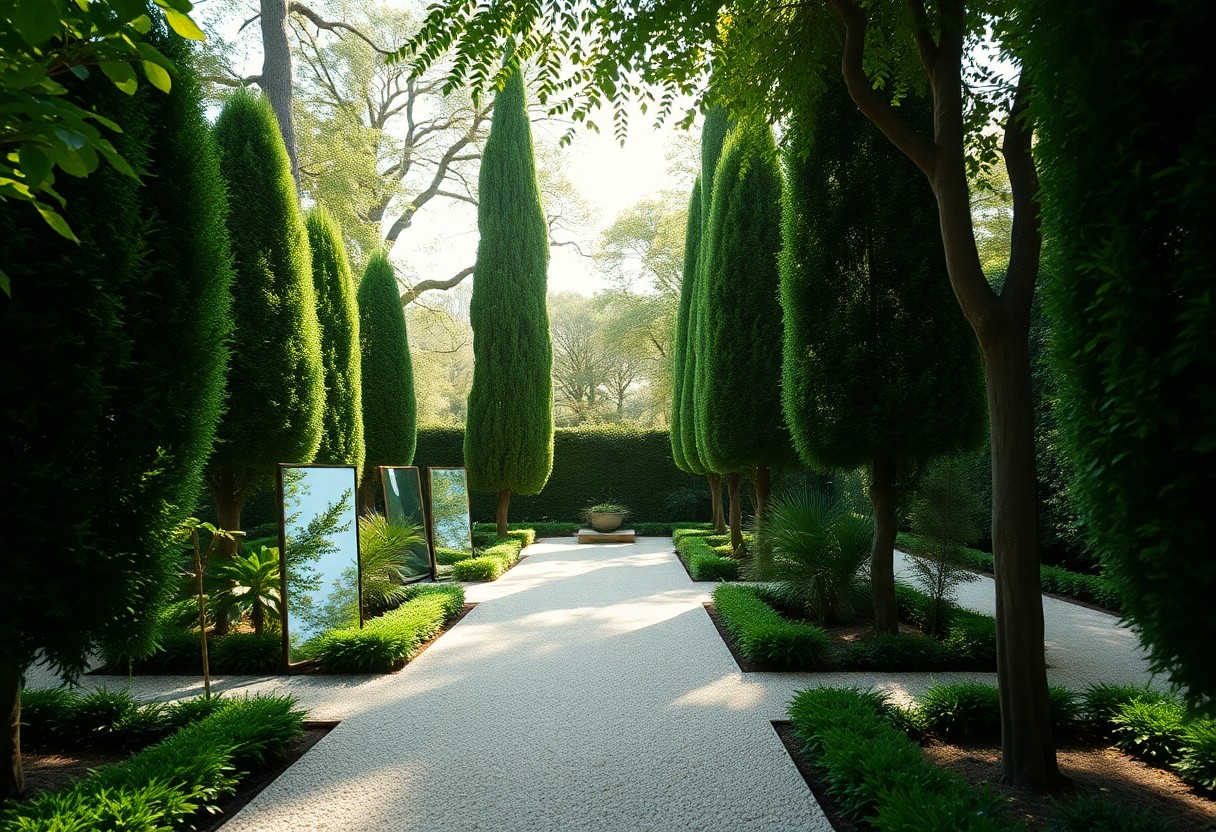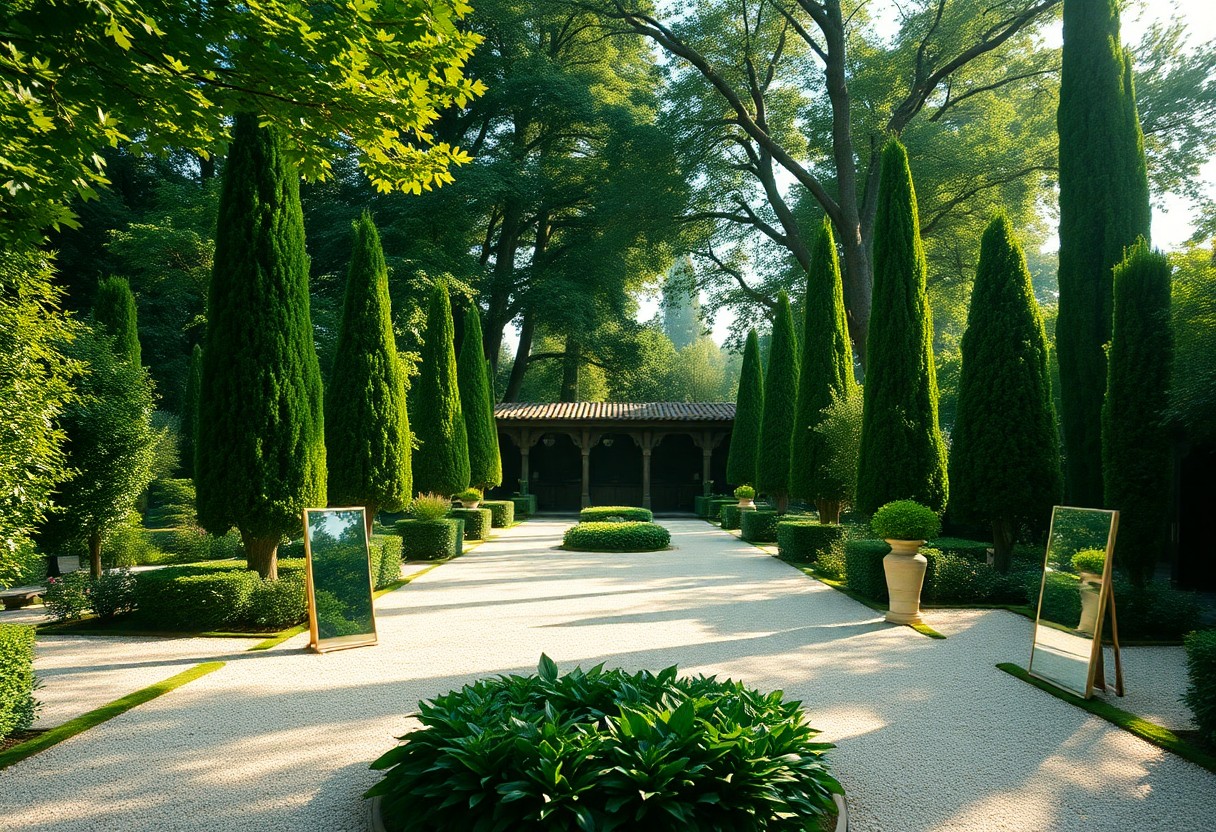Sunlight plays a vital role in the health and growth of your garden, even if you find yourself dealing with a shaded area. If your garden isn’t getting enough light, your plants may struggle to thrive. Fortunately, there are some simple strategies you can implement to maximize sunlight exposure in your shady garden. From selecting the right plants to adjusting your garden layout, you can create a more vibrant and flourishing outdoor space.
Key Takeaways:
- Consider using reflective surfaces such as mirrors or white fences to bounce light into shaded areas, enhancing brightness in your garden.
- Select plants that thrive in partial shade to maximize growth potential, ensuring a vibrant garden even in less sunny spots.
- Prune overgrown trees and shrubs strategically to allow more sunlight to penetrate the garden, while maintaining the health of the surrounding plants.
Understanding Shade in Your Garden
While shade may seem like a hindrance to your gardening ambitions, it’s vital to understand its role in your garden’s ecosystem. Different areas of your garden receive varying levels of sunlight, influenced by the surrounding structures and trees. By identifying the specific shade conditions in your garden, you can make informed decisions about plant selection and garden layout, ultimately creating a thriving and balanced environment for your beloved plants.
Types of Shade
- Full Shade: Less than 3 hours of direct sunlight.
- Partial Shade: Between 3 to 6 hours of sunlight daily.
- Dappled Shade: Light filtered through leaves, varying throughout the day.
- Light Shade: 6 to 8 hours of indirect light.
- Filtered Shade: Sunlight that passes through a light cover, like small branches.
This classification helps you choose the right plants suited to these conditions for optimal growth.
| Shade Type | Sunlight Hours |
| Full Shade | Less than 3 Hours |
| Partial Shade | 3 to 6 Hours |
| Dappled Shade | Varies |
| Light Shade | 6 to 8 Hours |
Measuring Sunlight Exposure
Across your garden, evaluating how much sunlight different areas receive is vital for your gardening success. You can track sunlight exposure by observing shadows cast by trees, buildings, and other structures during various times of the day and seasons. This knowledge allows you to map out where to place sun-loving plants versus those that thrive in lower light conditions.
Understanding your garden’s sunlight patterns is fundamental in selecting appropriate plants and ensuring their health. Use a sunlight meter or simply red flags to identify brighter areas throughout the day. Accurately measuring exposure will highlight the most vital spots for sun-loving plants and help you avoid placing shade-tolerant species in overly sunny areas, reducing stress on your garden.

Choosing the Right Plants
Now, selecting the appropriate plants is vital to transforming your shady garden into a vibrant paradise. By opting for shade-tolerant species adapted to low-light conditions, you can ensure your garden flourishes despite limited sunlight. Additionally, mixing in some reflective surfaces can help maximize natural light, making your space feel both bright and inviting. Ultimately, the right combinations will enhance the visual appeal and health of your garden.
Shade-Tolerant Species
Choosing shade-tolerant species provides you with a variety of options that flourish in low-light environments. Consider plants like hostas, ferns, and astilbes to ensure your garden remains lush and green. These plants not only thrive in the shade but also add unique textures and rich colors, transforming your space into a serene retreat. With the right planning, you can create a stunning garden that shines in its own unique way.
Incorporating Reflective Surfaces
Any garden can benefit from the incorporation of reflective surfaces to enhance light and brighten darker areas. Strategically positioning mirrors, glass decor, or light-colored surfaces can significantly amplify the natural light available, making your shady garden feel more open and vibrant. This clever technique can also create intriguing visual effects, enticing your guests and drawing their eyes to beautifully highlighted plants and features.
ShadeTolerant plants paired with reflective surfaces can dramatically improve your garden’s ambiance. Using mirrors and light-colored stones can bounce the scarce sunlight around, while strategically placed art pieces or glass objects can offer unique visual interest. This method of enhancing light not only makes your shady garden feel brighter but can also increase its overall appeal, creating an inviting space where you want to spend time. It’s necessary to balance aesthetics with practicality, ensuring the reflective elements complement the natural beauty of your plants and garden layout.
Pruning and Maintenance Techniques
Despite the challenges presented by a shady garden, employing effective pruning and maintenance techniques can significantly improve light penetration. Regularly assessing and managing the growth of your plants is necessary to ensure they don’t cast excessive shadows on each other. By strategically cutting back overgrown branches and foliage, you can create openings for sunlight to reach the ground and benefit your plants.
Selective Pruning
After understanding the layout of your garden, practice *selective pruning* by carefully removing branches that block sunlight. Focus on thinning dense canopies, targeting the inner growth, and eliminating any dead or diseased branches. This selective approach promotes healthier growth and allows more sunlight to reach lower plants.
Maintenance Tips for Light Penetration
At every gardening season, enhance sunlight exposure by applying these *maintenance tips*:
- Regularly assess your plants for any signs of overcrowding.
- Employ *fertilizing techniques* to support healthy growth and density.
- Clean debris regularly, as it can block sunlight.
After making these adjustments, your garden should thrive with improved light penetration.
Maintenance routines play a vital role in ensuring your plants have the greatest opportunity to receive *sunlight*. By implementing these *maintenance tips*, your plants will grow more vigorously and remain healthy. Ensure that you periodically evaluate the layout and health of your plantings to maximize light exposure. Consider rotating or repositioning plants when necessary. Additionally, utilizing reflective surfaces or light-colored materials can help bounce sunlight deeper into your garden. After you incorporate these practical strategies, you will notice marked improvements in your shady garden’s vitality.
Strategic Garden Design
For optimal light exposure in your shady garden, consider a strategic garden design that maximizes available sunlight. Position larger plants on the northern side, allowing smaller ones to bask in the sun’s rays. Additionally, choose plants that thrive in partial shade to create a vibrant, layered aesthetic while ensuring each plant receives the necessary light for growth.
Layering Plants for Light Exposure
Garden layering involves arranging plants by height to enable lower-growing plants to receive adequate sunlight. By placing tall plants, like sunflowers or delphiniums, behind short perennials, you create dynamic layers while allowing the smaller plants to flourish without being overshadowed.
Utilizing Raised Beds and Containers
Containers and raised beds enhance your garden’s design by strategically elevating plants closer to available light. These structures not only improve drainage but also enable you to reposition plants easily, allowing for optimal light exposure and enhancing plant health.
Consequently, by incorporating raised beds and containers into your garden layout, you can significantly amplify light exposure for your plants. These elevated growing areas are perfect for creating microclimates that cater to your garden’s needs, allowing you to customize soil, drainage, and moisture levels. With this flexibility, you ensure that each plant receives the light it requires, nurturing a thriving garden life.

Installing Light-Enhancing Structures
Once again, incorporating light-enhancing structures can significantly improve sunlight access in your shady garden. By strategically adding features like arbors, trellises, and reflective materials, you can create a brighter atmosphere. These structures not only redirect light creatively but can also enhance your garden’s aesthetics. Explore your options and discover how to maximize the natural light available to your plants.
Garden Arbors and Trellises
On utilizing garden arbors and trellises, you can create vertical spaces that capture and distribute sunlight in your garden. By training climbing plants to grow on these structures, you not only improve light exposure but add visual interest as well. Position them in areas that receive indirect sunlight to help elevate the overall brightness of your garden.
Mirrors and Reflective Materials
On the topic of mirrors and reflective materials, these clever additions can work wonders in amplifying the available light in your garden. By placing mirrors or shiny surfaces strategically, you can bounce sunlight into darker corners, giving your plants a much-needed boost of brightness.
It’s imperative to consider the placement of mirrors and reflective materials, as they can significantly alter the lighting dynamics of your garden. Position them to face sources of sunlight, ensuring that the light is effectively redirected into shaded areas. However, be cautious of overly reflective surfaces that might create harsh lighting conditions, potentially stressing your plants. Balancing the use of reflective materials with thoughtful placement can result in a more vibrant, flourishing garden that thrives even in less sunny spots.
Conclusion
Following this guide, you can effectively enhance the sunlight exposure in your shady garden, transforming it into a vibrant and thriving space. By implementing strategies such as pruning overhanging branches, choosing reflective surfaces, and utilizing container gardening, you can maximize the sunlight available to your plants. Additionally, consider selecting shade-tolerant plants that will flourish even in less-than-ideal lighting conditions. With a little planning and creativity, you can create a more inviting and flourishing garden that suits your aesthetic and botanical needs.
FAQ
Q: What are some effective methods to increase sunlight in a shady garden?
A: There are several strategies you can implement to enhance sunlight exposure in your garden. Consider trimming or pruning overgrown trees and shrubs that may block sunlight. Additionally, using reflective surfaces like white fences, mirrors, or light-colored rocks can help bounce light into shaded areas. Planting more shade-tolerant plants that thrive in low light can also be beneficial, as they will utilize the available light more effectively.
Q: Can I use artificial lighting to supplement sunlight in my garden?
A: Yes, artificial lighting can be a practical solution for enhancing light in a shady garden. Grow lights designed for plants can provide the necessary spectrum of light for photosynthesis. Options include LED grow lights, fluorescent bulbs, or high-intensity discharge lamps. Position them strategically to target areas where you want to encourage plant growth, especially during the darker months.
Q: Is it possible to relocate my garden to a sunnier spot?
A: Relocating your garden can be an effective way to increase sunlight exposure, especially if your current location is heavily shaded. If you have container gardens or raised beds, moving them to a sunnier part of your yard can significantly improve growth. If your garden is in-ground, consider replanting in a location that receives more direct sunlight throughout the day.
Q: What types of plants can thrive in lower light conditions?
A: Many plants are well-suited for growth in shaded areas. Consider shade-tolerant options such as hostas, ferns, astilbes, and some types of begonias. Many flowering plants, like impatiens and caladiums, also perform well in partial shade. When opting for plants, look for varieties specifically labeled as shade-loving to ensure they thrive in your garden’s lighting conditions.
Q: How can I design my garden layout to maximize sunlight exposure?
A: Designing your garden layout with sunlight in mind can make a significant difference in plant health. Position taller plants and structures to the north of shorter ones to prevent them from casting too much shade. Group plants according to their light needs, placing sun-loving plants in the sunniest areas. Additionally, consider creating open pathways or areas to allow sunlight to filter through, ensuring better light distribution across your garden.
